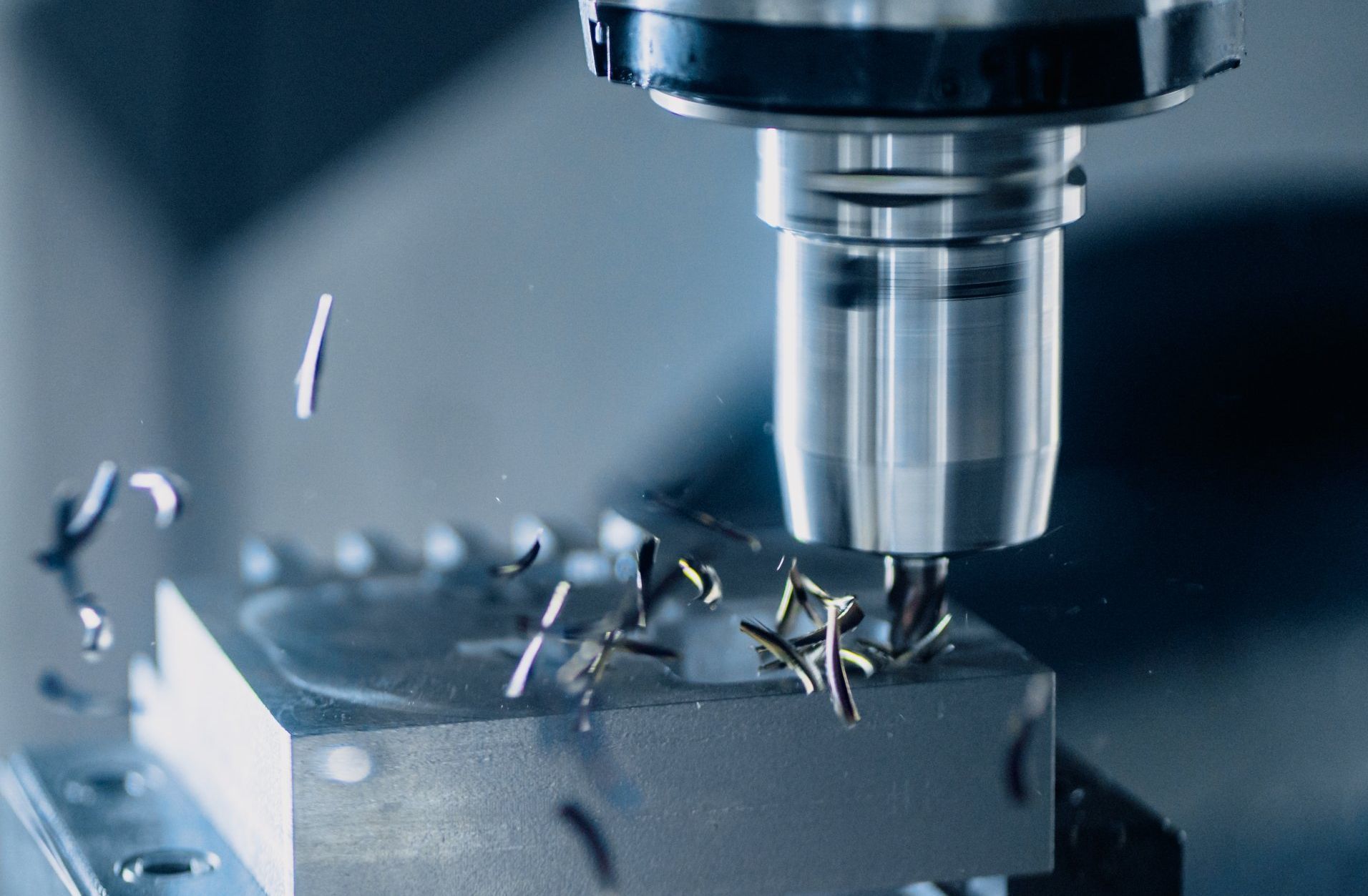Precision CNC Machining 101: Key Principles, Processes, and Best Practices
The manufacturing world depends on precision. Whether it’s aerospace components, automotive parts, or oil and gas equipment, there’s no room for guesswork, especially when fractions of a millimetre can make or break performance.
Precision CNC machining is the foundation of what we do here at GN every day. While it may sound technical, once you understand the basics, it’s easy to see why it’s gaining popularity. This advanced approach combines computer control with high-precision tooling to create parts that meet exact specifications without compromise.
Keep reading to learn CNC machine basics, the difference between milling and turning, the software behind it all, and what it takes to run a modern precision shop.

Defining Precision CNC Machining
Before diving into the specifics, it helps to define what precision CNC machining is and why it matters across so many industries:
Basic Terminology
CNC stands for Computer Numerical Control. It refers to automated machines that follow pre-programmed instructions to shape material into final parts.
These machines operate along multiple axes, usually three or more, to cut, drill, or shape material with incredible accuracy. This process is known as subtractive manufacturing, where material is removed from a billet to create a part. A billet is typically a cylindrical or rectangular solid block of metal.
A Quick Historical Overview
CNC evolved from manual machining methods that required operators to physically guide tools to early numerical control systems using punched tape to automate part production.
Punched tape was a paper strip with holes that machines read as instructions to control movement, speed, and cutting actions.
By the 1970s, digital systems had taken over, and technology has only accelerated since.
Why It's Relevant Today
Industries like aerospace, automotive, and oil and gas heavily rely on precision CNC machining. These sectors require complex geometries, tight tolerances, and materials that are often tough to work with.
CNC machines make it possible to meet those demands consistently and cost-effectively.
Core Components of a CNC System
Every CNC setup has a few critical parts working together, but the fundamentals remain the same:
Hardware Essentials
At the heart of any CNC machine is the machine tool, which might be a milling machine, lathe, or machining centre. Key hardware includes:
- Spindle: Rotates the cutting tool at high speeds
- Axes (X, Y, Z): Guides the tool and part in multiple directions
- Control panel: Where operators input commands and monitor activity
Software and Programming
Precision doesn’t happen without a plan. Engineers use CAD to design the part, then CAM software converts it into machine-readable instructions.
These instructions are typically in G-code (geometric), which controls movement and speed, and M-code (miscellaneous), which manages auxiliary actions like tool changes or coolant flow.
Tools and Toolholders
CNC machines use various cutters, including:
- End mills: For shaping and profiling
- Drills: For hole-making
- Turning tools: For cylindrical parts
Toolholders keep these cutters rigid and secure, which is essential for precision.
CNC Machining Processes
Most shops use a combination of parts and machining methods to meet design specs. Here’s a quick intro to CNC milling and turning, drilling and boring, and other standard processes.
Milling
Milling involves rotating cutters that remove material from the workpiece. Common operations include:
- Face milling: Produces flat surfaces
- Peripheral milling: Creates contours, slots, and shoulders for complex 3D shapes and tight-tolerance surfaces.
Turning
Turning rotates the part while the cutting tool stays stationary. It’s the go-to for cylindrical shapes like shafts and bushings. Key operations include:
- Threading
- Grooving
- Contour turning
Drilling and Boring
Drilling creates round holes, while boring enlarges and finishes them to tight tolerances. These processes are essential when hole location, diameter, and roundness matter.
Other Processes
Modern CNC shops also rely on:
- EDM (Electrical Discharge Machining): Great for hard materials and tight internal corners
- Grinding: Delivers ultra-fine finishes and high dimensional accuracy, especially on hardened materials
Key Benefits of Precision CNC
Why do manufacturers invest so heavily in CNC? Because it delivers serious advantages in performance, cost, and consistency.
Accuracy and Consistency
Once programmed, CNC machines can continuously repeat the same operation precisely. This process makes hitting tight manufacturing tolerances easier and ensures every part performs as expected.
Efficiency and Scalability
With CNC, shops can machine complex parts faster and with less manual input. This strategy shortens lead times and allows for mass production with predictable results.
Material Versatility
CNC machines can work with everything from titanium and stainless steel to engineering plastics and composites. Many materials are fair game with the proper tooling and feeds/speeds.
Reduced Human Error
Automation helps reduce mistakes. Once a skilled programmer sets everything up, the machine follows the instructions to a tee, so good CAD/CAM software and training are key to success.
Quality Assurance and Traceability
Many CNC systems track tool paths, spindle speeds, and cycle times, helping manufacturers document how they make each part. This traceability is a must in industries with strict regulatory requirements.
Multi-Axis Machining
Advanced machines with 4- or 5-axis capabilities eliminate extra setups by machining multiple faces in a single run. This system improves turnaround times while increasing dimensional accuracy.
Challenges and Limitations
CNC machining offers significant benefits but has a few hurdles, especially for starting companies.
High Initial Investment
Top-quality CNC machines, tooling, and software come at a cost. Add in skilled operators and programmers, and the startup expense can feel steep.
Complexity
Modern CNC systems are powerful but require specialized training. There's a learning curve for everything from 3D modelling to post-processing and machine setup.
Training and Certification Costs
Upskilling teams takes time and money. Companies often need to invest in software licenses, off-site courses, or on-the-job mentorship to bring staff up to speed.
Maintenance Requirements
Even the best machines need care. Routine calibration, tool inspection, and spindle upkeep help maintain precision and prevent breakdowns.
Skilled Labour Shortage
A growing shortage of qualified CNC professionals makes it harder for shops to hire experienced operators and programmers, limiting the speed at which teams can scale.
Future Trends in Precision CNC
The future of machining includes smart systems, real-time data, and adaptive technology that keeps improving production. Here’s what’s on the horizon:
Digital Integration
GN already leverages IoT and smart factory tools to track performance and reduce downtime. Real-time monitoring and predictive maintenance help avoid issues before they impact production.
AI and Machine Learning
CNC systems are getting smarter. AI algorithms can analyze tool wear, adjust cutting parameters on the fly, and even detect anomalies mid-cycle. As this tech matures, expect more adaptive machining and less trial-and-error.
Sustainability
Companies are under pressure to reduce waste and energy usage. Expect more energy-efficient machines and coolant recycling systems that push CNC into the green era.
Emerging Materials
Bio-based plastics and next-gen alloys are becoming easier to machine, giving manufacturers more options to meet performance and sustainability goals.
Digital Twins and Simulation
With digital twin technology, engineers can simulate a part or machining process before production, helping to validate designs, reduce trial runs, and avoid costly rework.
Delivering Precision in Every Part We Make
Industry experts and newcomers alike rely on precision CNC to meet the demands of modern manufacturing. With the right tools, training, and strategy, CNC becomes a powerful force for innovation and growth.
At GN, we’ve built our reputation on getting the details right. Our advanced CNC capabilities help partners across industries confidently and quickly move their ideas from the drawing board to production.
Whether you need high-volume runs or complex one-off components, we’re here to deliver precision without compromise.






